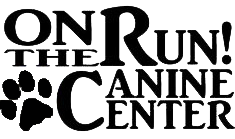
When you are working on heelwork training to prepare for trials, here’s a fun drill you can try that will make your training more enjoyable and also help you identify training or handling issues.
Plan your heeling pattern before you train your dog. Don’t always start moving and navigate as you go. Look at the area you plan on working in and plan a short heeling pattern that would not typically happen in a trial. The pattern should not include all the heeling maneuvers. It can and should include elements not included in heelwork at a trial (longer duration slows or fasts, 270 turns, pivot lefts, slow time into turns, etc.).
Put together on a short pattern and, depending on the dog’s experience (and handler’s), include anywhere from 8-12 elements. An element would be a halt, left turn, right turn, about, straight line, slow, fast, back to normal, 270 right, 270 left, etc. Use the elements that are fully trained – do not use any maneuvers that are weak. Write your pattern down on a sheet of paper or walk it while you describe it. Then, walk/handle it without the dog to ensure that you have the pattern memorized. If you forget something or make a mistake, start over. Make sure you have that pattern memorized before you add the dog.
Now get your dog (the dog should be crated, stationed, or on a down stay while you practice or memorize your heeling pattern. Warm your dog up away from the heeling area and when you are both ready, move to the start of your planned heeling pattern. Make sure both you and your dog are focused and ready. Pause a moment and then start moving forward. There are many pauses while competing in obedience, so build them into your training. Ignore the mistakes as you move through the planned heeling pattern. The goal of this exercise is to identify the weak areas in your handling or your dog’s training that need work separately – not chained together.
If your handling and the dog’s heeling felt good, take a break and design another pattern. If there were issues, take a short break (engagement, down stay) and repeat the same pattern. If the same issues arise, you have some homework to do later. Take a break and design another pattern. If you are competing in Novice obedience, where there are two heeling patterns, you can do the first on leash and the second off leash. Do not work on the figure 8 in between the two heeling patterns.
Make sure to videotape your sessions so you can focus on your handling and not on what your dog is doing. You can look at this video when you take breaks between heeling patterns.
If you work in an area with boundaries (like a ring or a room), keep your heeling mostly away from the barriers. If you have a dog that gets distracted by heeling into barriers, work that separately before you add it into challenging heeling patterns.
This planning does a few things for you and your dog. It has you focus on handling instead of the dog. It allows you to plan a chain of well-trained heeling elements so you can find training or handling issues to focus on in a different session. It allows you and your dog to work on different heeling patterns rather than drilling the same patterns you might see in the ring. Drilling typical patterns in the confines of a ring can cause your dog to focus more on the ring/barriers for information instead of on the communication you have established with your handling.
I’ve used this training exercise for many years for heeling. It’s fun and interesting, and it forces students to plan and focus on the elements of heeling rather than drilling.
What heelwork exercises do you do with your dogs to prepare for trialing?


0 Comments